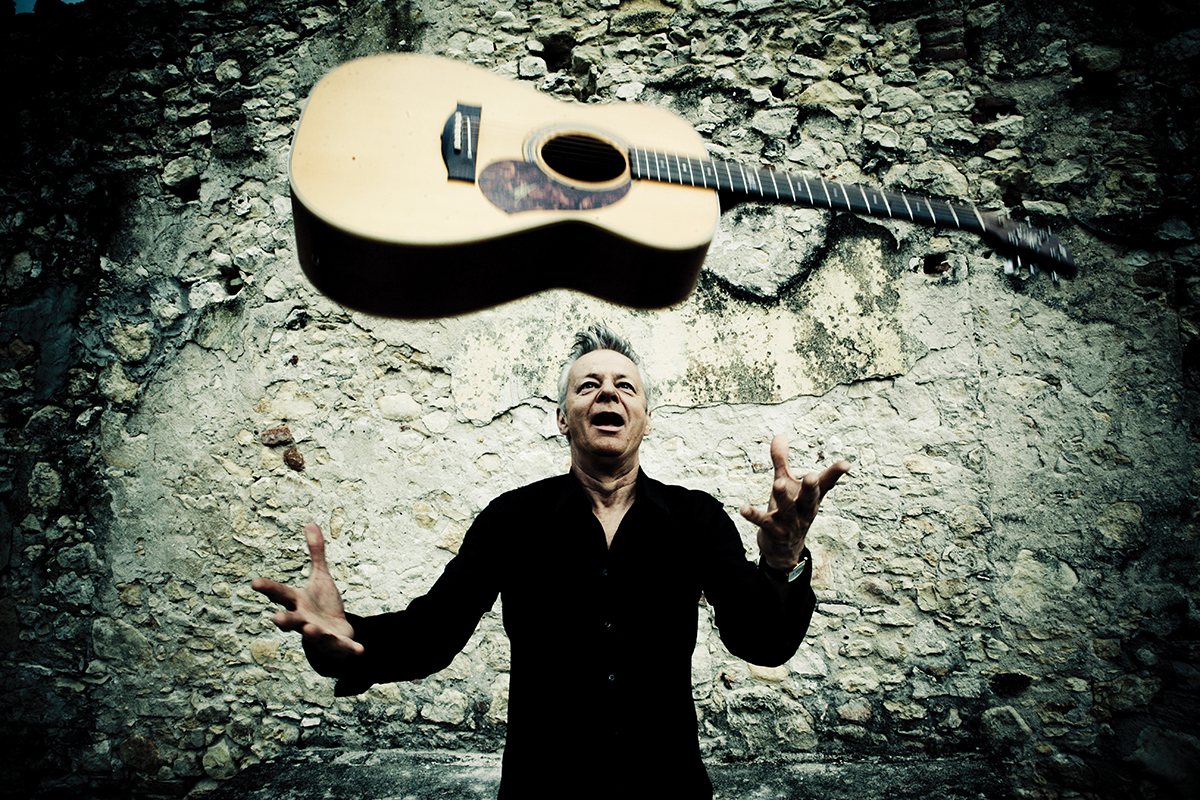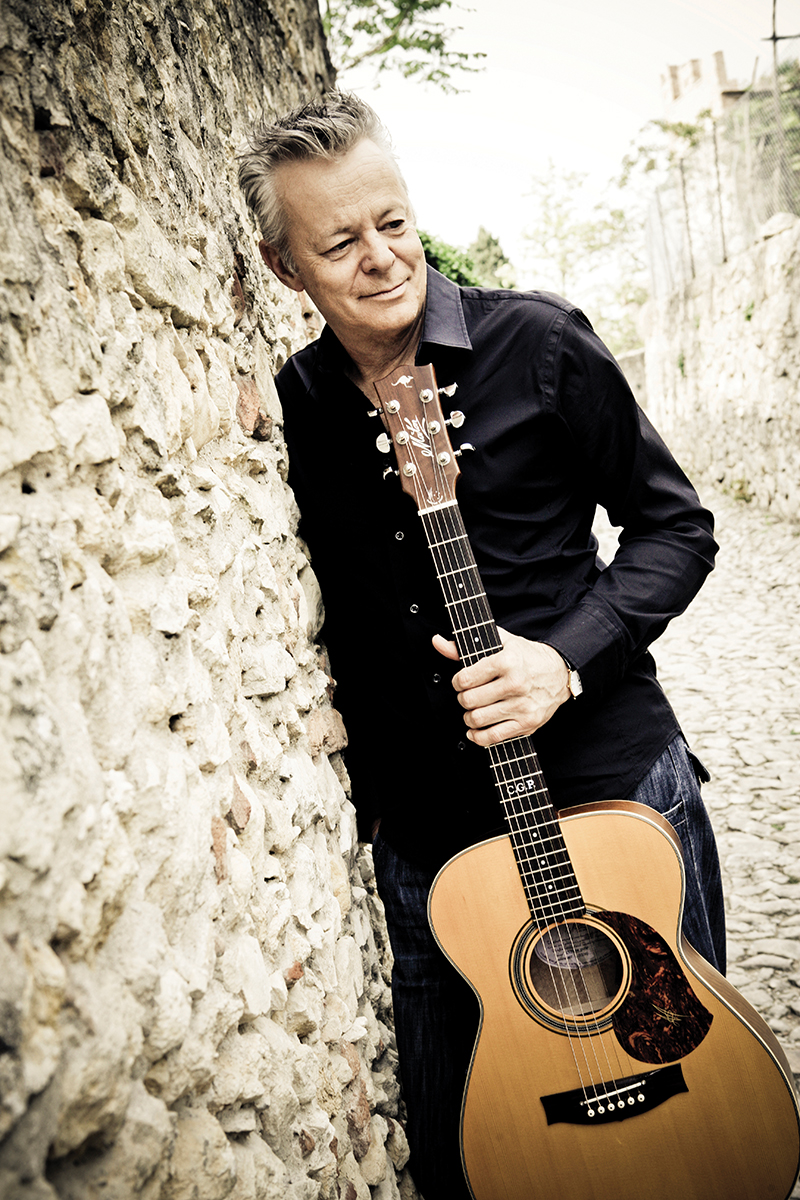10 Top Tips: Tommy Emmanuel
The virtuoso fingerstyle guitarist has been playing professionally since the age of six and is one of only five people to have been awarded Chet Atkins’ Certified Guitar Player accolade. He shares his tips to become a better player.

1. Choose the right guitar
“If you’re just starting out, you don’t need an expensive guitar. You should start with a practical instrument, something not too cheap, but definitely not expensive. I recommend Yamaha, Ibanez, Maton or the cheaper range of Martins. Epiphone are good, too.
“If you are already playing and want to play open mics or guitar clubs or bars, you will need a guitar with a decent pickup so you can be heard. You’ll need to try various guitars to see which one sounds best.
The best pickup, in my opinion, for just plugging in and playing is a Maton, as it’s the most user-friendly and the most real and usable sound from an electronic pickup that is out there. You’ll have to experiment to find what your needs are. Some people like the sound of a magnetic pickup in the soundhole. Some of us like an under-saddle piezo-style pickup. Some like the stick-on sensor sound.”
2. Get your guitar set up properly
“Most parents who are buying their kids their first guitar don’t know that the guitar, as it is in the shop, is set up with a high action. All guitars can be set up so they are comfortable to play and don’t strain your hands after long periods of playing.
“If the store doesn’t have an in-house luthier, set up and repair section, then you need to find a place that can make the changes you need to make the guitar more playable.
The action should be not too low, with the strings buzzing on the frets, and not too high so that you struggle to get any clarity when playing barre chords. Make sure that you have your preferred strings on while the guitar is being adjusted, because thicker strings can have a lower action.”
3. Tune up!
“Firstly, learn how to tune a guitar without a tuner, then get yourself a tuner and get familiar with using it. The more time you spend tuning, the more your ear will get used to the sound of being in tune or out of tune.
As you get to know your guitar more thoroughly, you’ll find its imperfections and be able to tune accordingly so you are in tune all the way up the neck.
“I also recommend you try various brands of strings and find which one tunes up the best with your guitar. I use several tuners – one backstage, one on stage (which mutes) and one as a clip-on for referencing between songs.”
 4. Learn good songs
4. Learn good songs
“I recommend starting out with simple songs that have a simple chord structure but still have good melody over the top. Learning songs that you like will keep you interested and motivated.
When you’re working on a new song, you don’t need to be doing anything else but this new song. Work it out and practise it bar by bar until you can play it all the way through without mistakes. This may take some time. Once you can do that, then make sure that every time you pick up your guitar you play through this new song and keep it in your memory.
A good idea is to record yourself and listen back to how you are playing the song. Make sure you listen for any parts that are not smooth or in time. This will help you iron out any of the bumps in the arrangement and make it flow.”
5. Know your limitations
“It’s better to be able to play something simple with good feeling and good time than to struggle your way through something that is very difficult to play. At whatever stage you’re at in your playing abilities, you should know your limitations and work within them.
“In order for you to surpass where you’re at now, you need to put in a lot of work – and that takes time and a lot of dedication. So if you have a chance to play in front of an audience, make sure you play the songs that you are confident you can play well.
Nobody wants to watch someone struggling with their instrument. We want to hear nice music played with feeling.”
6. Don’t be afraid of emulating
“I think it’s nature’s way that we all start out emulating someone. We see and hear an artist that inspires us and lights a fire in us, and we want to be like them and to play their music because it’s exciting.
We learn as many of their songs in their style as we can, and we enjoy playing these for other people. But, eventually, we start to find our own voice, our own style, our own way of playing. This usually happens when we start composing and performing our own songs.
“Music is like a language. We learn other people’s songs so we can jam with others who have learned the same songs, and it gives us an opportunity to interact and play together, having something in common to say. This is when we start learning new ways from each other and exchanging ideas through the language of music.”
7. Use a metronome
“Playing with a metronome is very important. When I first used the metronome, it was my enemy. I hated it and it kept slowing down. Actually, it showed me all the faults in my sense of timing.
Once I got used to playing with this mechanical beast, it set me free and I felt liberated and relaxed with my playing. Some songs really work played with a metronome and others don’t. You’ll need to experiment and find which ones work for you.”
 8. We need to be inspired
8. We need to be inspired
“You cannot manufacture inspiration, it has to show up through many sources. For us to be truly creative, we need to be in a physical and mental state of excitement and readiness to experiment. Sometimes, we may be emotionally moved by a film or a song we’ve heard, and when we are feeling these emotions that’s usually when ideas come to us – especially if we have our instrument in our hands.
I, personally, have written many songs through being moved by a film that touched me deeply, and I know that because I was in that state I just let my feelings flow through the guitar.
It helped me to stay in the moment with this new idea and use all my songwriting abilities to finish the piece and stay focused. It needs to be a priority to get inspired… sometimes you need to listen to something completely different from what you normally listen to and it can take you outside your comfort zone. You also need to keep your mind open to all kinds of influences around you. This will help you to stay spontaneous when ideas flow.”
9. We need experience
“In order for us to become better musicians and play with more confidence, we truly need to have the experiences of playing in front of people in different situations as often as possible. Having a completely open attitude about music and being willing to try to learn new things will help us in the long run to be more skilled and mature as musicians.
“The experience of playing in front of people in the moment demands a lot more of you mentally and physically than just sitting at home playing for yourself. So you need that exposure as often as you can to raise the level of your playing and performing.
When we play in front of people, we tend to dig in more because we’re trying to play with more power, feeling and clarity, and we are in a state of full concentration. We don’t always play this way in our bedroom.
“On a different topic, make your arrangements interesting! When you find a song you want to play, stay true to the melody then focus on the following:
a) Find the right key to play the song in, looking for ways of getting as many open notes into the melody as possible so it has a beautiful flow to it.
b) If the song has a repetitive melody, then find alternative chords so they surprise the listener at every chance.
c) Keep an ear open for all the ways in which a key change can be utilised and try to make them as unpredictable as possible.
d) A good arrangement doesn’t mean that you have to fill
up every bar with lots of notes; sometimes a good arrangement has lots of space and allows the listener to use their imagination more.”
 10. Practise a lot
10. Practise a lot
“When I was a kid starting out, I didn’t want to practise. I wanted to go outside and play with my friends. My parents told me that if I didn’t practise, I wouldn’t get any good at the instrument.
I didn’t care at the time because, somehow, I could always play the songs that I loved and get through the show. It wasn’t until I was about 14 that I tried to work out songs that were seemingly impossible, and I actually worked some out, and it was a revelation to me. I realised if I put the work in and didn’t give up, I could work out anything.
I discovered the joy of working hard and hearing the results of my dedication. I love practice now, and it’s an important part of our lives as musicians. We need to practise alone as well as with others we are working with.
Some people approach it in a militant style, where they have a routine and they stick to it. I have never been like that… I usually learn a new song and only practise that new song until I’ve got it down. Then I move on to the next song.
Larry Carlton wrote on a guitar once, ‘Practise what you must, but play what you love’. These are wise words. There are days when I know I must practise my motor skills, so I spend all my time playing things that work all my muscles and help me build up strength.
Then there are times when I just play songs one after the other to enjoy the feeling of flowing with the music. All of the best players I’ve been around have been very dedicated to practising. When I got to know Chet Atkins, I realised how much he practised and how dedicated he was. It inspired me and challenged me to work harder.”
